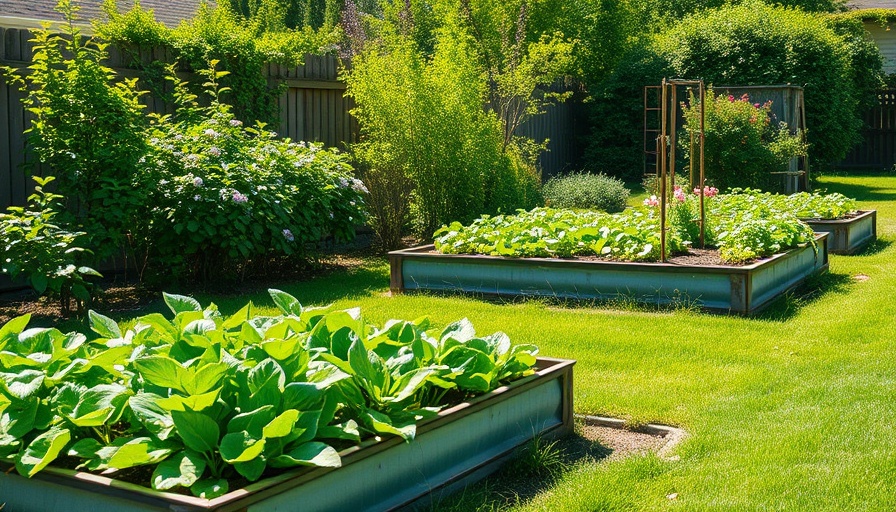
The No-Till Gardening Movement: Understanding Its Roots
No-till gardening is more than a trend; it’s a movement rooted in an effort to nurture soil health and sustainability. The concept originally flourished in agricultural practices, particularly during the Dust Bowl era, when maintaining soil moisture was crucial for farming viability. Its promise to improve soil structure and enhance moisture retention captured the attention of many gardeners, especially in regions like the Okanagan Valley, where soil quality can significantly impact yield. But does this method live up to the hype? As Ashley, a soil science expert, delved into her three-year journey with no-till gardening, she raised critical points that all gardeners should consider before jumping on this bandwagon.
In 'I Tried No-Till Gardening for 3 Years—Here’s the Dirty Truth…', the discussion dives into the critics and benefits of no-till gardening, prompting us to explore these pivotal insights further.
Is No-Till Gardening for Everyone? The Importance of Soil Readiness
One of the most striking insights Ashley shares is that no-till gardening isn’t a one-size-fits-all solution. Not every gardener’s soil is primed for this method. In fact, before implementing a no-till approach, it’s essential first to assess your soil’s condition. Many gardeners may experience frustration when their efforts fail due to underlying soil compaction— a common issue that can hinder plant roots from effectively accessing nutrients. A simple percolation test, which involves digging a hole and testing how long it takes for water to drain, can reveal much about your soil’s readiness for no-till gardening.
The Misconceptions Behind No-Till Practices
One prevalent myth is that no-till gardening means leaving the soil undisturbed. However, Ashley emphasizes the necessity of subtly disrupting the soil surface to improve seed germination. Seeds need solid contact with the soil to thrive, and maintaining a finely textured surface can boost germination rates significantly. If gardeners opt to skip this step, they risk lower yields as many seeds struggle to grow. Thus, understanding how to balance disruption with preservation is key to successfully transitioning to no-till gardening.
Lessons Learned: The Reality of No-Till Gardening
Western gardeners diving into no-till practices must also navigate the realities of this approach. For instance, while many pioneers in no-till gardening have shared their methods, such as layering compost or using wood chips, fundamentally adapting these strategies to individual circumstances remains crucial. Different gardening settings in the Okanagan might respond differently to no-till techniques. Therefore, informed experimentation and patience, including a potential waiting period of 2-6 years for soil improvement, are essential.
Practical Tips for Okanagan Gardeners Embracing No-Till
For those considering or struggling with no-till gardening, it's helpful to implement some tips. First, assess the soil. If compaction is evident, you might need to till initially and incorporate organic matter to enhance soil health. Additionally, don't hesitate to disrupt the surface slightly before sowing seeds to ensure they find adequate contact with nutrient-rich soil.
Why Knowledge is Power in Gardening
Finally, as with any gardening method, continuous learning and adaptation are the best paths to success. Resources such as Skillshare and local gardening communities can be valuable assets for Okanagan gardeners. Whether it’s learning about soil health, crop rotation, or effective pest management, investing time in education will yield rewards in your garden.
As Ashley notes, gardening requires skill and knowledge, and understanding the nuances of practices like no-till can enhance your gardening experience. While seeking out resources and engaging with fellow gardeners can make the journey enjoyable, remember to address the specific needs of your garden and soil. With patience, effort, and the right knowledge, no-till gardening could very well become a beneficial practice for you.
If you're ready to transform your gardening approach and learn more about effective gardening techniques, consider joining discussions with local gardening clubs or engaging in online workshops. Your garden—and the balance of your local ecosystem—will thank you!
 Add Row
Add Row  Add
Add 




 Add Row
Add Row  Add
Add 

Write A Comment